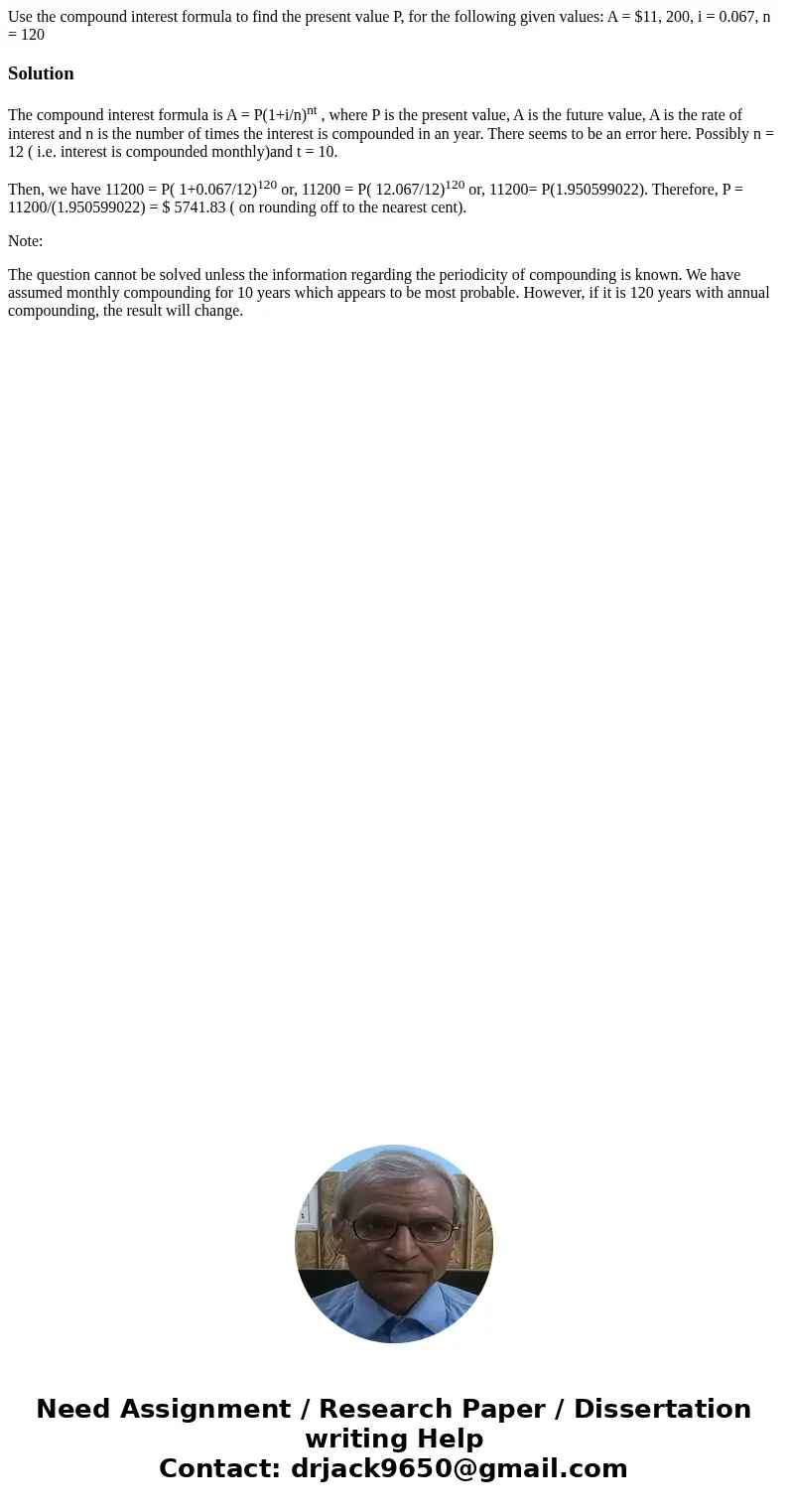Use the compound interest formula to find the present value
Use the compound interest formula to find the present value P, for the following given values: A = $11, 200, i = 0.067, n = 120
Solution
The compound interest formula is A = P(1+i/n)nt , where P is the present value, A is the future value, A is the rate of interest and n is the number of times the interest is compounded in an year. There seems to be an error here. Possibly n = 12 ( i.e. interest is compounded monthly)and t = 10.
Then, we have 11200 = P( 1+0.067/12)120 or, 11200 = P( 12.067/12)120 or, 11200= P(1.950599022). Therefore, P = 11200/(1.950599022) = $ 5741.83 ( on rounding off to the nearest cent).
Note:
The question cannot be solved unless the information regarding the periodicity of compounding is known. We have assumed monthly compounding for 10 years which appears to be most probable. However, if it is 120 years with annual compounding, the result will change.

 Homework Sourse
Homework Sourse